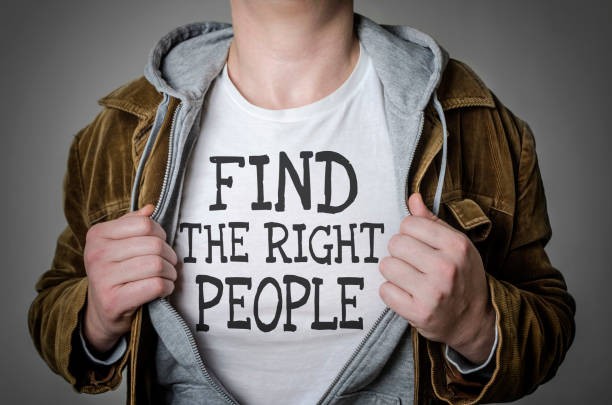
An organisation is built on culture. This feels self-evident, but like anything that can be chalked up to existing because “that’s the way we’ve always done things”, it’s worth investigating more thoroughly. Not only for its own sake, but as part of the life-long, habitual practice of being thorough in everything you do. So, why do we say that organisations are built on culture?
The Cambridge English Dictionary defines an organisation as “a group of people who work together in an organised way for a shared purpose”. I see this definition as having four parts:
- A group of people
- Who work together
- In an organised way
- For a shared purpose.
However, breaking the definition down to such a degree changes the original concept, and instead of objectively defining an organisation, I believe it idealises one. The first point is the bare minimum to be an organisation; the other three are the qualities that make up a productive organisation. Furthermore, they form a pyramid of importance: a group of people can be anything from a successful company to a smattering of passengers on a bus, but a group who works together become a team. If that team can work together in an organised way, you have efficiency. Finally, if a shared purpose can underpin and inform the actions of that team, then you have something special.
So, where does culture fit into this definition?
The simple, but not particularly easy answer is: everywhere.
A group of people will always naturally develop a culture over time. Supporters at a sporting event grow rowdy or excited or despondent together over the course of one match. A group of high school friends, whether consciously or not, will over time decide what they do and don’t like to do, and will in turn either support or dismiss the actions of their peers based on this culture.
Beyond the first part of the definition, the idea of culture splits in two: conscious and unconscious. Your high school friendship group, for example, probably isn’t aware that their obsession with a particular genre of music could be closing them off to a wider world of sound. On the flip side, that same obsession might happen to foster an appreciation for the virtue of disciplined, consistent practice needed for constant improvement. Either way, it’s most often luck.
A step beyond this (usually) unconscious culture-building, is “working together” in “an organised way”. To stay with the high school example, this is where something like team sports come in. Instead of building a culture based on who you sit with at lunch and what you end up idly chatting about, these people build their culture around more organised, conscious objectives. For one thing, you change into a different uniform to participate in this culture – you change from the school uniform, which everyone wears, into your particular sport’s designated training or playing gear. You wear numbers on your back, which will, in many sports, decide exactly how you’re meant to work together. In rugby union, the number 10 can commonly expect a pass from the number 9.
Though more complicated, this same kind of structure extends to the working world. If you’re an assistant manager, you can expect most of your directives to come from the manager. If you’re a sales rep, you should expect to be making some sales.
However, in both situations, and really in any organisation, this is the broadest, least productive understanding of culture you could have. If the depth of your connection to your number on the sporting field is knowing where you’re meant to stand, then the only culture your team has is that you’re playing a particular sport. If the depth of your connection to the title on your name tag is knowing that sales reps make sales, then your workplace’s culture is probably only as deep as “people work here”.
Culture is everywhere, but that doesn’t mean it’s always working for us. Our culture of convenience is one of the reasons for Australia’s (and much of the developed world’s) obesity crisis, for example. Our culture of connection in the digital age is one of the reasons so many young people are experiencing higher levels of depression and anxiety than ever before. These examples highlight the difference between conscious and unconscious cultures. Whether you know it or not, every group, every organisation has a culture, and the impact of each one is inescapable.
So the goal, then, is not to build a culture – that will happen no matter what. Instead, the goal is to build the right culture.
In rugby union, everyone must wear boots. But in the All Blacks, rugby union’s most successful national team, everyone wears black boots. Apart from headgear and mouthguards, boots are the only uniform item that individual members can pick for themselves, and as such, you see a dizzying array of flashy, neon colours striding across the pitch on any given game. The All Blacks, of course, don’t have to wear black boots, but it’s about culture: everyone’s on the same team, driven by the same goals, and wearing the same boots is just another reminder of this fact.
But who decides this?
In a team like the All Blacks, who decides everyone wears the same boots? In a huge company, who decides that every member should prioritise learning? Who makes the standards, and who upholds them?
The answer, in any domain, is the leader. In a truly productive organisation, that really means everyone, because in a productive organisation, everyone behaves and acts like a leader. But realistically, and especially in bigger organisations, a leadership structure needs to be anchored by specified, formal leaders. And so then, the question becomes, how do you choose the right leader?
Choosing a leader is a concentrated version of choosing a culture. Culture is ultimately the behaviour and practice of a group of people, and the right leader will not only influence their team’s behaviours and practices in the right direction, but will bring a new dimension of understanding to what makes a productive culture. Productivity is the ratio of outputs to inputs, and so maximising this ratio is only half the battle – the other half is prioritising the right outputs. Publishing more books is a good step for a publication house, for example, but only if they’re good books.
Clearly, selecting the right leader is incredibly important for an organisation, and doing so can sometimes feel like weathering a heavy storm on open seas without a compass. So if I can at least offer a compass, that might be the first step in offering some security and clarity in making this all-important decision.
I use this framework when consulting or offering support to others, but I also use it regularly to assess myself as a leader. I am the leader of my small business, and so I need to consistently check myself, and assure that I am the right person for the job. Since designing The 15 Disciplines framework, it has been the bedrock of all of my leadership thinking, and so serves as the starting point for my leadership investigation.
Below are fifteen questions which may assist you to establish the criteria for choosing leaders in your own organisation:
-
Does your candidate have the capacity to override their own emotions to respond productively to a situation rather than react
unproductively?
- Will your candidate lead from a foundation of credibility, not a foundation of authority?
- Will your candidate ensure ethical decisions are made for the greater good of the organisation, despite the harm, discomfort or inconvenience it may cause to a few, or even themselves?
- Will your candidate challenge the way people in your organisation think and act so that they understand how this impacts the intended outcomes?
- Does your candidate hold a strategic perspective of all factors in and around your organisation that either energise or de-energise your its capacity to achieve its objectives?
- Does your candidate have the capacity to prioritise and systematically coordinate activity with a team to ensure it will achieve the standards required of a task or project?
- Will your candidate establish and maintain a position of control to ensure delegated tasks will be completed on time and to standard without relinquishing overall responsibility for the task?
- Will your candidate orient them self to new information in a timely manner to ensure their decisions remain relevant to achieving objectives?
- Will your candidate ensure all people are provided an equal opportunity to succeed and treat them differently, according to their demonstrated competence and commitment?
- Does your candidate have the capacity to maintain a positive culture and leverage small successes to elevate people’s performance?
- Will your candidate create an inclusive environment through the fair and appropriate dissemination of information and expectations?
- Will your candidate maintain a healthy emotional and physical lifestyle to ensure they are in the best condition to lead and inspire others to do the same?
- Will your candidate connect a diverse group of people to a common cause to ensure unproductive sub-cultures do not form?
- Will your candidate be a credible exemplar of the standards you expect of every team member and build accountability in others for those standards?
- Will your candidate create a safe place for people to share the good, the bad and the ugly to ensure a continuous cycle of learning and growth in team capacity?
These questions stem from The 15 Disciplines which are unpacked in far greater detail in my latest book Ethics Trump Power. This book is the ultimate resource for leaders to understand who to be as a leader and what to look for in other leaders. It offers multiple strategies, tips and tricks for leaders to use in any scenario, especially during the recruitment of leaders.



